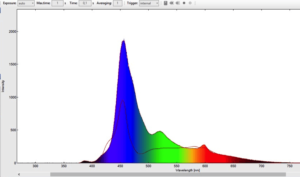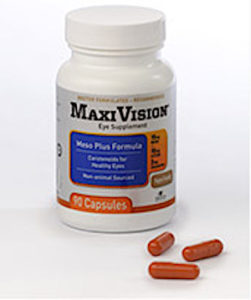Protect Your Eyes from Blue Light
With work from home comes some bad news, and it doesn’t involve buying more PJs to expand your work wardrobe.
Blue Light: Real Eye Danger
It is blue light, the almost invisible light and radiation emitted from computer screens, tablets, cell phones, and the like. If you didn’t think this was an issue to eye health, it is for sure now that the average person has upped their time on these devices to 2.69 times more per day than previous to COVID. And, if your children are finishing their school term online, a healthy eye issue for them as well.
Just because you can’t see it does not mean blue light is not doing permanent damage to your eyes. In short, blue light is on the edge of the visible spectrum, and that makes it difficult to see. However, as the light gets more challenging to perceive, like Ultra Violet radiation, the actual amount of energy and radiation transmitted to and through the eye goes up. In size, the wavelength is 400-500 nanometers, but the energy amount is exceptionally high. Our eyes have a bit of a defense as the cornea and lens block the blue light from getting to the back of the eye, or retina.

And while the amount of light and energy spewed by these electronic devices is much less than sunlight, the real issue is proximity as well as the time of day. Most people have these devices reasonably close to their face and eyes, so the amount of blue light entering the eye is high. Blue light essentially goes all the way through the eye to the macular area. This can lead to macular degeneration and blindness later in life. After cataract surgery, this becomes even more important to consider as not all artificial lenses block blue light equally. And, even if you are under 50, blue light is directly related to eyestrain.
Limit Exposure Time
The solution to diminishing the effects of blue light is threefold. First, even though the “safer at home situation” is forcing the use of more electronic devices, limit your time of use to 50 minutes, then take a 5-minute break away from the screen in question. Going outside and focusing on foliage in the distance is a positive strategy. An overlooked effect of blue light is on sleep, and several studies have shown that not being exposed to blue light for the four hours before bed leads to much healthier and restful sleep. Many displays have a “night” setting which tones down the blue light, and that is useful as well after 5 p.m.
Block the Blue Light
If you are taking those steps, then it is time to armor up and block some of the blue light. If you work primarily on one device, you can install a clear, blue light blocker screen. Many of these screens also have an increased privacy feature. If you use multiple devices, then you can either just wear blue-blocking glasses or have this coating added to your eyewear. Just make sure to wear them all the time. Outdoors, most sunglasses will block both UV and blue light, but these do vary by manufacturer, so check with your ophthalmologist.

Strengthen the Eyes from the Inside-Out
Internally, nutrition makes a big difference in the effects of blue light. Two essential compounds, Lutein and Zeaxanthin, help to provide a barrier to blue light entering the macular area. Unfortunately, most people are woefully short of getting enough of the recommended minimum.
These compounds are technically carotenoids, a plant compound found primarily in green leafy vegetables, corn, and eggs. However, even eating these foods regularly, while a good start does not get to the recommended levels of intake. From the studies, on average, people are getting about 10-15% of their RDA for both nutrients. In nature, these come in a 5:1 ratio, so the RDA is 10 milligrams (mg) for Lutein and 2 mg for Zeaxanthin, a combined level of 12 mg. In the studies, dietary intake topped out at 2 mg, combined for both components.

Given their demonstrated protective properties, most supplements are based at 25 mg of Lutein combined with 5 mg of Zeaxanthin. There are many manufacturers of these compounds, and maybe the best in terms of efficacy and research back up is FloraGlo by Kemin Industries.
One final note to consider is that eyestrain can masquerade as other conditions, like over-work or a headache. Also, your eyes don’t send an alarm comparable to a muscle injury where the pain is a useful guide. Just because you don’t feel symptoms is no reason to not take precautions and take care of your eyes.
References
Abdel-Aal el-SM, Akhtar H, Zaheer K, Ali R. Dietary sources of lutein and zeaxanthin carotenoids and their role in eye health. Nutrients. 2013;5(4):1169‐1185.
Bernstein PS, Li B, Vachali PP, et al. Lutein, zeaxanthin, and meso-zeaxanthin: The basic and clinical science underlying carotenoid-based nutritional interventions against ocular disease. Prog Retin Eye Res. 2016;50:34‐66.
Bungau S, Abdel-Daim MM, Tit DM, et al. Health Benefits of Polyphenols and Carotenoids in Age-Related Eye Diseases. Oxid Med Cell Longev. 2019;2019:9783429.
Burkhart K, Phelps JR. Amber lenses to block blue light and improve sleep: a randomized trial. Chronobiol Int. 2009;26(8):1602‐1612.
Buscemi S, Corleo D, Di Pace F, Petroni ML, Satriano A, Marchesini G. The Effect of Lutein on Eye and Extra-Eye Health. Nutrients. 2018;10(9):1321.
Chew EY, Clemons TE, et al. Age-Related Eye Disease Study 2 (AREDS2) Research Group, Secondary analyses of the effects of lutein/zeaxanthin on age-related macular degeneration progression: AREDS2 report No. 3. JAMA Ophthalmol. 2014;132(2):142‐149.
Eisenhauer B, Natoli S, Liew G, Flood VM. Lutein and Zeaxanthin Food Sources, Bioavailability and Dietary Variety in Age Related Macular Degeneration Protection. Nutrients. 2017;9(2):120.
Esaki Y, Kitajima T, Ito Y, et al. Wearing blue light-blocking glasses in the evening advances circadian rhythms in the patients with delayed sleep phase disorder: An open-label trial. Chronobiol Int. 2016;33(8):1037‐1044.
Evans JR, Lawrenson JG. Antioxidant vitamin and mineral supplements for slowing the progression of age-related macular degeneration. Cochrane Database Syst Rev. 2017;7(7):CD000254.
Johnson EJ. et al. Intake of Lutein and Zeaxanthin Differ with Age, Sex, and Ethnicity. Journal of the American Dietetic Association. 2010; 110(9):1357 – 1362.
Johnson EJ. Role of lutein and zeaxanthin in visual and cognitive function throughout the lifespan. Nutr Rev. 2014;72(9):605‐612.
O’Hagan JB, Khazova M, Price LL. Low-energy light bulbs, computers, tablets and the blue light hazard. Eye (Lond). 2016;30(2):230‐233.
Perez Algorta G, Van Meter A, Dubicka B, Jones S, Youngstrom E, Lobban F. Blue blocking glasses worn at night in first year higher education students with sleep complaints: a feasibility study. Pilot Feasibility Stud. 2018;4:166.
Ranard KM, Jeon S, Mohn ES, Griffiths JC, Johnson EJ, Erdman JW Jr. Dietary guidance for lutein: consideration for intake recommendations is scientifically supported. Eur J Nutr. 2017;56(Suppl 3):37‐42.
Scott TM, Rasmussen HM, Chen O, Johnson EJ. Avocado Consumption Increases Macular Pigment Density in Older Adults: A Randomized, Controlled Trial. Nutrients. 2017;9(9):919.
Wahl S, Engelhardt M, Schaupp P, Lappe C, Ivanov IV. The inner clock-Blue light sets the human rhythm. J Biophotonics. 2019;12(12).

